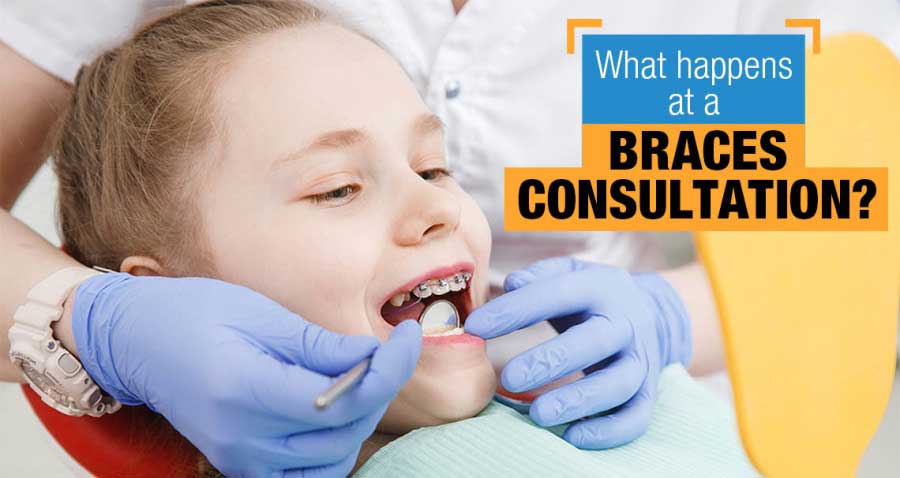Comprehensive Guide to Orthodontics Procedures for Dealing With Oral Misalignments
Comprehending the intricacies of each treatment, including their mechanisms, benefits, and prospective disadvantages, is crucial in making notified choices regarding one's orthodontic treatment. As we browse through the thorough overview to orthodontic treatments for fixing dental misalignments, the detailed details of each method will unfold, losing light on the path toward a useful and unified oral positioning.
Orthodontic Procedures Review

Normal changes and tracking are critical parts of orthodontic treatment to make certain development is on track and to make any type of needed modifications along the way. By undertaking orthodontic procedures, individuals can not just accomplish a straighter grin however also enhance their overall dental health and feature.
Conventional Braces: Just How They Work
When taking into consideration orthodontic treatments for oral misalignments, standard braces stand out as a reliable method for remedying teeth placing. Conventional dental braces consist of braces, cables, and bands that work with each other to use constant stress on the teeth, gradually moving them right into the wanted positioning.
One key facet of just how standard braces job is the process of bone remodeling. As stress is used to the teeth with the dental braces, the bone surrounding the teeth is improved to sustain the new tooth placements. This makeover is vital for the long-lasting stability of the remedied placement. People will need regular modifications at the orthodontist's office to make sure the dental braces continue to apply the right stress for reliable teeth movement.
Unseen Aligners: Disadvantages and pros
These clear, customized trays are basically undetectable when put on, making them an enticing option for people looking for an extra visually pleasing orthodontic treatment. Patients can remove the aligners before eating or brushing their teeth, reducing the threat of food obtaining stuck in the home appliance and simplifying the cleaning procedure.

Surgical Orthodontic Options
Surgical interventions in orthodontics present viable choices for dealing with complicated dental misalignments that may not be successfully solved with traditional orthodontic treatments. While conventional braces and invisible aligners can deal this with several orthodontic problems, particular situations require medical treatment to accomplish optimal results. Surgical orthodontic options are generally advised for severe malocclusions, significant jaw discrepancies, and instances where the underlying bone framework needs modification to attain appropriate positioning.
One typical surgical orthodontic treatment is orthognathic surgical treatment, which involves rearranging the jaws to remedy functional issues such as problem chewing or talking. This surgical procedure is typically carried out in collaboration with an orthodontist that helps straighten the teeth before and after the procedure. Surgical orthodontics might also entail procedures to reveal impacted teeth, get rid of excess gum tissue, or reshape the jawbone to develop a more unified face account.
Prior to considering surgical orthodontic choices, patients undergo a thorough examination to figure out the necessity and potential advantages of such interventions. cumming aligners. While surgery might seem difficult, it can significantly enhance both the function and looks of the smile in instances where standard orthodontic treatments fall short
Retainers and Post-Treatment Care

Post-treatment treatment includes adhering to the orthodontist's guidelines diligently. This may include correct dental health practices, attending follow-up consultations, and wearing the retainers as prescribed. Failure to adhere to post-treatment care guidelines can lead to relapse, where the teeth progressively move back in the direction of their original positions. Regular retainer wear, great oral hygiene, and regular dental exams are essential for preserving the outcomes accomplished through orthodontic surgical treatment and guaranteeing the long-term security of the dealt with oral positioning.
Verdict
In final thought, orthodontic procedures use various options for dealing with dental misalignments. Surgical orthodontic choices are readily available for a lot more severe misalignments. In general, orthodontic treatments can properly boost dental wellness and visual appearance.
As we navigate through the comprehensive overview to orthodontic treatments for dealing with dental misalignments, the detailed details of anonymous each technique will unfold, shedding light on the course towards a harmonious and useful oral placement. - invisalign
One of the most typical orthodontic therapies is the usage of braces, which consist of steel brackets and cables that use mild pressure to slowly move teeth right into the wanted setting.When taking into consideration orthodontic treatments for oral misalignments, traditional dental braces stand out as a tried and true method for fixing teeth positioning. Additionally, undetectable aligners might not be appropriate for complicated orthodontic problems that need more considerable teeth movement, as they are commonly suggested for light to moderate cases. Retainers are customized orthodontic tools designed to hold teeth in their fixed placements after the completion of orthodontic treatment.